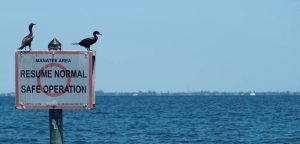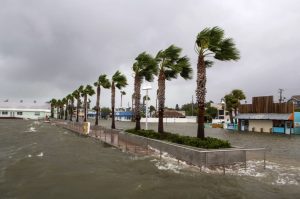Florida with the Worst Geography in United States!

How do you imagine the Worst Geography in United States?
- Flood?
- Flesh-eating bacteria?
- Hurricanes?
Climate change looms over us as companies continue to pump carbon dioxide emissions and other pollution into our air and seas. Temperatures are rising, and natural disasters are becoming rapidly more intense each year. So what fresh hell is in for the Sunshine State if we can’t get our climate crisis under control quickly? Before we address the Worst Geography in United States, we must understand global warming as a whole before we talk about what may happen to Florida specifically.
Global warming
Human activities have impacted the globe’s climate patterns. As the earth’s overall temperature grows warmer, it impacts every aspect of the climate. Since the 1700s, the amount of carbon dioxide in the air has increased by 40 percent. Since we’ve started to emit more carbon emissions and other heat-trapping gasses, we’ve slowly warmed the surface of our planet. Greenhouse gases – the gases that contribute to trapping the sun’s warmth in Earth’s lower atmosphere – have hurt Earth’s oceans and ice. Oceans are becoming more acidic as carbon dioxide reacts with water to become carbonic acid. In the previous 80 years, the ocean has warmed at least one degree.
Flood
The planet’s surface growing warmer is also causing ice and snow to melt earlier, and glaciers are melting, too. Sadly, the ice in Greenland and Antarctica is no exception. This mass melting means that more water is pouring into the ocean, and the sea levels are rising at an alarming rate. Let’s break down what all of this means for Florida.
This is the first reason for Forida to have the Worst Geography in United States. The sea level around Florida is due to rise one to four feet within the next century. It will erode the beaches and cause coastal flooding. Land in Florida will be submerged as the water rises over time, forcing people out of their homes, especially if they live near a beach.

Hurricane
we are approaching why Florida has the Worst Geography in United States. People will be forced to move inland. If coastal cities are to survive, they’ll have to prepare, like building larger seawalls and elevating structures to lift buildings off the ground. It’s not just the rising sea that threatens Florida. It’s the tropical storms and hurricanes, too. They’ve already become more intense over the past twenty years, as we’ve already seen the devastation they can cause. That is another reason for Florida ti have the Worst Geography in United States.
On October 26, 2023, at least 27 people were killed during Hurricane Otis in Acapulco, Mexico, and four remain missing.
Flesh-eating bacteria
Oh! This fact that represents another reason for Florida to have the Worst Geography in United States is really scary! Thousands of homes were destroyed and left without electricity or water. These types of disasters will grow more frequent as time goes on. Florida is already seeing the effects of global warming through hurricanes. All of these factors lead Florida to have the Worst Geography in United States. When Hurricane Ian came through Florida, it had an unexpected impact on the state. In its wake, it brought a rise in cases of vibrio vulnificus, also known as flesh-eating bacteria.
It’s a rare bacteria that lives in brackish seawater, and in 2022, it was responsible for 11 deaths.
Honestly, Florida deserves to be the state with the Worst Geography in United States! After the hurricane, warm, standing water becomes an ideal home for the bacteria.Yes! It is another significant factor for being the Worst Geography in United States. The hurricane brought more people into contact with the bacteria, allowing it to spread throughout Florida. People who had open wounds, cuts, or scratches were warned that they could be easily exposed to it through the seawater or brackish water. As hurricanes increase, Florida may see an increase in unexpected infections. Vibrio has more than 100 strains.
Cholera
This is another reason for Florida to have the Worst Geography in United States. Cholera another reason for Florida to have the Worst Geography in United States, is caused by an infection of the intestine with the Vibrio cholerae bacteria. You may already be familiar with it as it’s a well-known acute diarrheal illness, but it’s also the cause of tens of thousands of deaths across the globe every year. Once vibrio vulnificus enters the body, it thrives. Despite the name “flesh-eating bacteria,” scientists don’t believe it eats flesh.

Debbie King, a proof of the fact that Florida has the Worst Geography in United States!
What happens is it secretes enzymes and toxins as the bacteria multiply, and that’s what causes necrosis, the death of tissue cells. This gives people the impression that it’s eating their flesh.
This case confirms the fact that Florida has the Worst Geography in United States. One sad case is that of Debbie King, a woman who scraped her right shin while climbing onto a friend’s pontoon in the Gulf of Mexico. It’s an injury that many would overlook, especially if it didn’t seem too serious. King’s friend helped dress the wound. What King didn’t know was that the vibrio vulnificus lurked within the waters.
In the following days, King’s skin became red and blistered. When she went to the doctor, believing it must have been sunburn, they would send her straight to the emergency room. King was fortunate that the doctors at HCA Florida Citrus Hospital recognized what they were looking at. They knew that the bacteria would kill the healthy tissue in the wound. And it did. After four days in intensive care, King had already lost most of the flesh on her leg. It was just bone. King was warned that she would die if they didn’t amputate. She agreed. The first amputation was below the knee.

The doctor was hoping to save as much of the leg as possible. Sadly, the bacteria had spread so far that they had to amputate five inches above the knee. After the operation, she spent four days in critical care with sepsis. While Debbie King was devastated afterward, she learned to adapt to her new body in time. She found a way to continue living life to the fullest. But if climate change continues to progress, Debbie’s case might not seem so anomalous down in Florida, and if hospitals are flooded by a huge number of people experiencing necrosis across their body, those hospitals’ ability to help the people in question might be seriously hampered.
Expensive Climate Insurance
Another reason for Florida to have the Worst Geography in United States is insurance; We think this is horrifying enough, but this is just the start of Florida’s geographical battering under the effects of climate change. Cities at large will be impacted by the destruction a hurricane brings. As storms become more frequent, Floridians will see that insurance for wind damage will become more expensive or even hard to obtain to begin with. Florida is already seeing soaring premiums for hurricane coverage. Many people in Florida are already contemplating leaving their home state simply due to the fact they’ve been priced out of insurance.
Many Floridians have reported their insurance premiums have doubled and, in some cases, are more expensive than their mortgage. One resident mentioned that their premiums had risen from $750 in 1999 to a little over $3000 in 2022. In 2023, it would jump to $4,678. And this is living in an area that hasn’t been hit by a hurricane in over a hundred years.
The coral reefs and ocean acidification
Another reason Florida has the Worst Geography in United States is this one! The coral reefs and ocean acidification are also a risk to the state of Florida. Ocean acidification sees a decrease in the pH of the Earth’s oceans, impacting the ability of sea life to live.

As the water temperature rises and ocean acidification sets in, it will kill the algae that live in the coral reefs and provide them with food. This means the coral reefs will die. This, in turn, leads to coral bleaching, as the corals will turn white without algae. The acidity leads to the death of these corals and other sea life, like fish. And in the past three centuries, we’ve seen ocean acidity increase by 25 percent. There is a small ray of hope for the coral reefs. Researchers have discovered that some coral colonies can tolerate the heat more than others.
Scientists believe that if they can plant corals on the reef that have the genetics that lead to this heat resistance, they might be able to give our coral reefs a fighting chance. This will allow the corals to breed and produce more heat-resistant offspring. The hope is that if they create enough genetically distinct coral babies, they’ll be able to create coral reefs that are tolerant of extreme heat and other threats, including disease. Still, with that being said, ocean acidification will decimate Florida’s marine ecosystems, fisheries, and tourism. But Florida’s problems with water won’t end there.
Deterioration of Everglades
Another fact for Florida to have the Worst Geography in United States is coming; As higher air temperatures increase, water will evaporate more and more into the air from soil, plants, and surface water. There would be a 25 percent increase in the demand for water within the next half-century, and this will include irrigated farmland. Rising sea levels and climate change are a huge threat to the Everglades. Humans have already diverted the natural flow of water away from the Everglades to try to prevent flooding and to give farmers more water, but it did far more harm than good. During the early 20th century, engineers blew up waterfalls and rapids in Miami rivers.
Their goal was to build a canal. It immediately displaced wildlife as they scattered to get away while fish were killed in the blasting. There were even rumors that some people saw an alligator go flying after the explosion. Then came the parking lots and hotels. There is an effort to try to return the Everglades to their original water flow, but it may be too late as global warming will make the divergence more necessary. Swaths of the Everglades are less than three feet above sea level. Rising sea levels will easily swallow up this part of the Everglades, and salt-tolerant species will be able to spread throughout the state.

It will also threaten or kill species that cannot tolerate salt water, turning the ecosystem completely upside down. It’ll also lead to more experiences like Hurricane Ian spreading a flesh-eating bacteria. Rus The increase in salinity will also endanger the Biscayne Aquifer, South Florida’s primary source of drinking water. For example, after the water became too salty to drink, Hallandale Beach had already been forced to abandon six of its eight drinking water wells. The city is currently trying to move its water wells west in hopes of preventing them from being contaminated with salt water again.
Why is Florida such a prime target for hurricanes? Again, it’s all about geography. At 1,350 miles, Florida has the second longest coastline in the United States, second to Alaska. Florida is situated in warm, tropical waters, which is where hurricanes thrive best. They begin as a tropical wave over warm ocean waters. They typically start at the equator, and that puts Florida right into most hurricane’s line of fire. Whenever a hurricane blows through the Caribbean and the Gulf of Mexico, it often makes its way to Florida.
This mix of a long coastline and low-lying land is why Florida is so vulnerable to the impact of global warming. It is not only pummeled by hurricanes; it must deal with rising sea levels that threaten to flood the state.
A Danger for Agriculture
A further reason for Florida to have the Worst Geography in United StatesProperty, infrastructure, and land will be lost to the sea. Agriculture is another victim of climate change, and it doesn’t look like things will be getting better any time soon. It’ll be rare to see freezing temperatures in Florida. This could be beneficial to fruits and vegetables that grow in the winter, and it could help the citrus trees that bloom in the spring. But that’s not where agriculture would be hit hardest.
It would be in the summer. As the temperatures rise and the summers become unbearably hot, it’ll be less likely corn will be able to grow uninterrupted. It would impact the growth of sugar, peanuts, and cotton.

The amount of crops that people will be able to grow will also depend on how much water can be redirected to agriculture. Livestock productivity would tank. The heat stress would make it difficult for animals to function normally, including their metabolism. They’ll become more susceptible to heat stroke. Cattle will be particularly at risk as they can’t dissipate their heat like other animals can. They begin to feel heat stress at temperatures above 80 degrees Fahrenheit. It won’t kill them, but farmers will have to do more work to care for them and help them regulate their body temperatures to make them more productive.
Hard Situation for Animals
Another reason for Florida to have the Worst Geography in United States is associated with animals. Cattle would not be able to be worked during the extreme heat. It might only be possible to work with them in the early morning before temperatures are at their height, which gives farmers a very small window of time. Cattle would only be able to wait in processing for a little over 30 minutes in the heat, which would bring the cattle industry to crawl. Working in the evening wouldn’t be an option either. It takes cattle at least 6 hours to dissipate the heat they’ve accumulated throughout the day.
For example, let’s say the day is at its hottest at 4 PM. If that were the case, the cattle would not have recovered from the day’s heat until after midnight. The entire night would need to be dedicated to the cattle’s recovery, meaning it would not be an option to do the work at night. It’s not just the animals who would suffer. Climate change always affects human health, especially children, the elderly, the sick, and the poor. We’ll see a rise in heat stroke and dehydration. It’s predicted that the average temperature in seventy years in Florida will be 95 degrees Fahrenheit between 45 and 90 days per year.
Today, there are about 15 days per year of extreme 90-degree weather for comparison. It’ll be increasingly dangerous to spend time outside in the summer. The warmer temperature may increase the amount of ground-level ozone in the air. It’s a key component of smog and will, therefore, have a huge impact on pre-existing lung conditions like asthma. People would be at increased risk of dying from heart or lung disease.
The goal of having clean air will become more difficult the more ozone there is in the air. Let’s look even further back in time to see how much the temperatures have changed in Florida. The average winter temperatures from 1950 to 1970 were around 57.4 degrees Fahrenheit. From 1991 to 2010, the winter temperature average rose to 59.5 degrees Fahrenheit. Out of all Americans, Floridians are the most likely to believe in climate change. According to the Florida Atlantic University’s Center for Environmental Studies, 74 percent of Americans believe in climate change.

In Florida, however, that number rocketed to 90 percent. Breaking down that 90 percent even further, 75 percent believe climate change is partially responsible for the change in extreme weather. It’s difficult for Floridians to deny climate change as they watch what is happening with the extreme weather they’re facing, especially the hurricanes. Between 2013 and 2023, Florida became the home of 13 of the top 25 most natural-disaster-prone counties. On April 12, 2023, there was a storm, and some parts of Fort Lauderdale saw up to 26 inches of rain. There was widespread flooding.
They even had to close the City Hall building and prepare it for demolition due to flood damage. Floridians are also more likely than any other American to want the federal government to do something about climate change. Sixty-nine percent want state action, and 70 percent want the federal government to act. Where Floridians don’t always agree is what is responsible for climate change. In March, the study discovered that 65 percent believe humans are the cause, but when they held the study again in September, it fell to 57 percent.
Climate migration will come to Florida. As hurricanes destroy more and more housing and residents are priced out of their homes, they will move further inland. Climate change has impacted Florida’s housing market as well. Since hurricanes continue to wipe out more and more homes, there is a corresponding labor shortage. Emergency services can’t find people to fill their ranks, and hotels are short-staffed. In some cases, employers have had to hire people from more inland areas.
There are times when these employees may even have to take a two-hour bus ride for what is a minimum-wage job. It’s funny, yet sad, to think that the elevated houses in The Jetsons may one day be an actual reality to help save us from the ravages of global warming. Or we could just get the major companies causing it under control. Which outcome do you think is more likely?
It was a discussion about the reasons why Florida has a terrible geography or the Worst Geography in United States. If you want to know more about the worst Geography in United States, you can check Here.
Also, you can watch this video about the worst geography in United States;
Here is the summary of the main problems about Florida and the worst geography in United States we discussed about;
|
Hurricane |
Flood |
|
Hard Situation for Animals |
Flesh-eating bacteria |
|
The coral reefs |
Expensive Climate Insurance |
|
A Danger for Agriculture |
The ocean acidification |
 Arab24 اخر اخبار الوطن العربي
Arab24 اخر اخبار الوطن العربي
